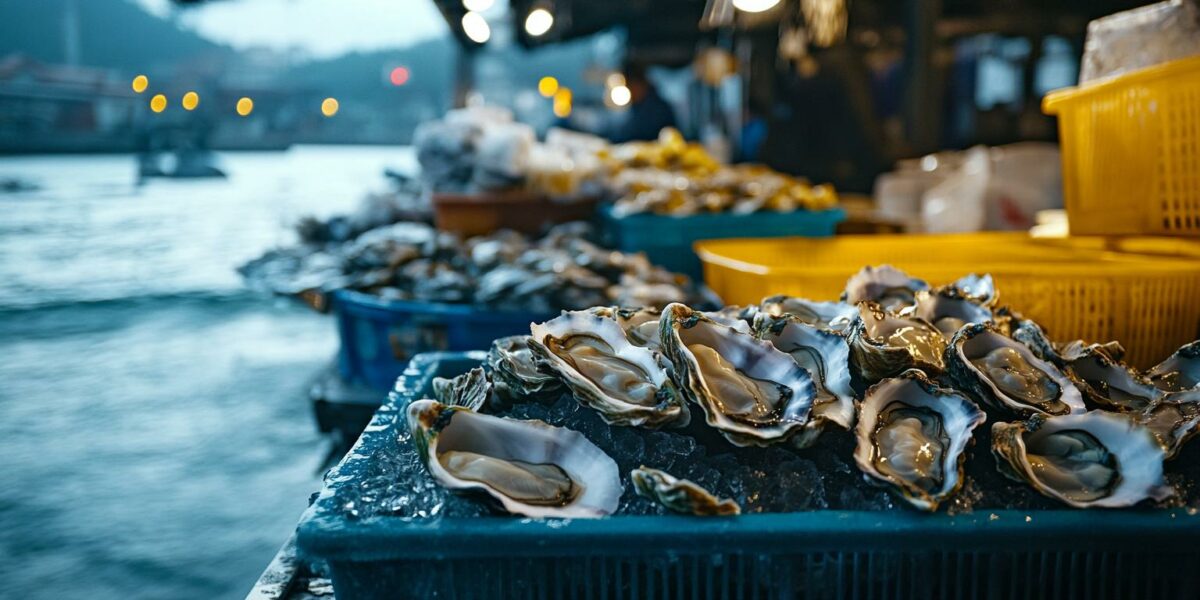The Growing Threat of Vibrio Infections
Marine pathogens like Vibrio vulnificus and Vibrio parahaemolyticus are increasingly prevalent in coastal waters. These bacteria, which thrive in warm, brackish environments, pose severe health risks through ingestion and direct contact with contaminated water.
Consuming undercooked or raw seafood, particularly oysters, is the most common way to contract vibriosis. Oysters filter water, accumulating Vibrio bacteria, which can lead to severe infections if consumed without proper cooking.
Symptoms of vibriosis include nausea, vomiting, diarrhea, and fever. In severe cases, particularly with Vibrio vulnificus, infections can result in sepsis, amputations, and even death, with a mortality rate up to 20%.
Climate change has exacerbated this issue by warming ocean waters, creating ideal conditions for Vibrio to flourish, thus expanding the geographic range and frequency of infections.
Climate Change and its Impact on Vibrio
The rising global temperatures have significantly increased the prevalence of Vibrio infections. Warmer waters have extended the range of these bacteria northward along the U.S. East Coast and other regions.
Climate change has prolonged warm seasons, allowing Vibrio to thrive for more extended periods. Vibrio-related illnesses are now more frequently reported from late spring to early fall.
Extreme weather events, such as flooding, also contribute to the spread of Vibrio by contaminating coastal and river waters with harmful bacteria. The CDC has issued multiple warnings about the heightened risks of Vibrio infections in warmer waters.
Key preventive measures include:
- Avoiding raw shellfish consumption, especially oysters, unless thoroughly cooked.
- Protecting open wounds when swimming in brackish or saltwater.
- Raising awareness among vulnerable populations about the risks of eating raw or undercooked seafood.
Populations Most at Risk
While anyone can contract Vibrio, certain groups face higher risks of severe illness or death. Individuals with weakened immune systems, liver disease, or diabetes are particularly vulnerable.
Healthy individuals might experience mild gastrointestinal symptoms, but for those with compromised immune systems, infections can quickly escalate, leading to severe complications like septicemia or necrotizing fasciitis.
Elderly individuals and young children are also at greater risk, along with those with chronic conditions that impair immune function.
The combination of climate change and the increasing prevalence of Vibrio highlights the urgent need for public awareness and preventive measures to protect the most vulnerable populations.
The Deadly Nature of Vibrio Infections
Among Vibrio species, Vibrio vulnificus is particularly dangerous, known for causing rapid tissue destruction and necrotizing fasciitis. When it enters the bloodstream or muscle tissue through an open wound, it can lead to severe complications.
Despite being rare, Vibrio infections are more deadly than other common foodborne pathogens. Up to 1 in 5 individuals infected with Vibrio vulnificus die, often within days of symptom onset.
Infections can also occur through direct contact with contaminated water. Even small cuts or scratches exposed to brackish water can become entry points for the bacteria, posing a significant risk for coastal residents and workers.
Efforts to mitigate the impact of Vibrio infections include improving disease surveillance, educating the public on food safety, and enforcing guidelines for shellfish harvesting and storage.



KaylaFrost
Intersting read, but I think some of the risks are a bit overblown. Just my opinion.
coraunity0
OMG, this is scary stuff. Are there any treatments available if someone gets infected?
Isaac
Why isn’t there more public awareness about this? It sounds really serious.
Luis_Solstice
I’ve always wondered about the risks of swimming in the ocean with cuts. Now I know!
camila
Great article, very informative. But can we really avoid eating oysters forever?
ava5
Climate change strikes again. What can we do to protect ourselves?
MiloFlare
Is there any way to test seafood at home for Vibrio contamination? 🤔
leah
Thanks for the info! I’ll definitely think twice before eating raw oysters from now on.
james3
Wow, this is terrifying! Do you think enough people are aware of this risk?